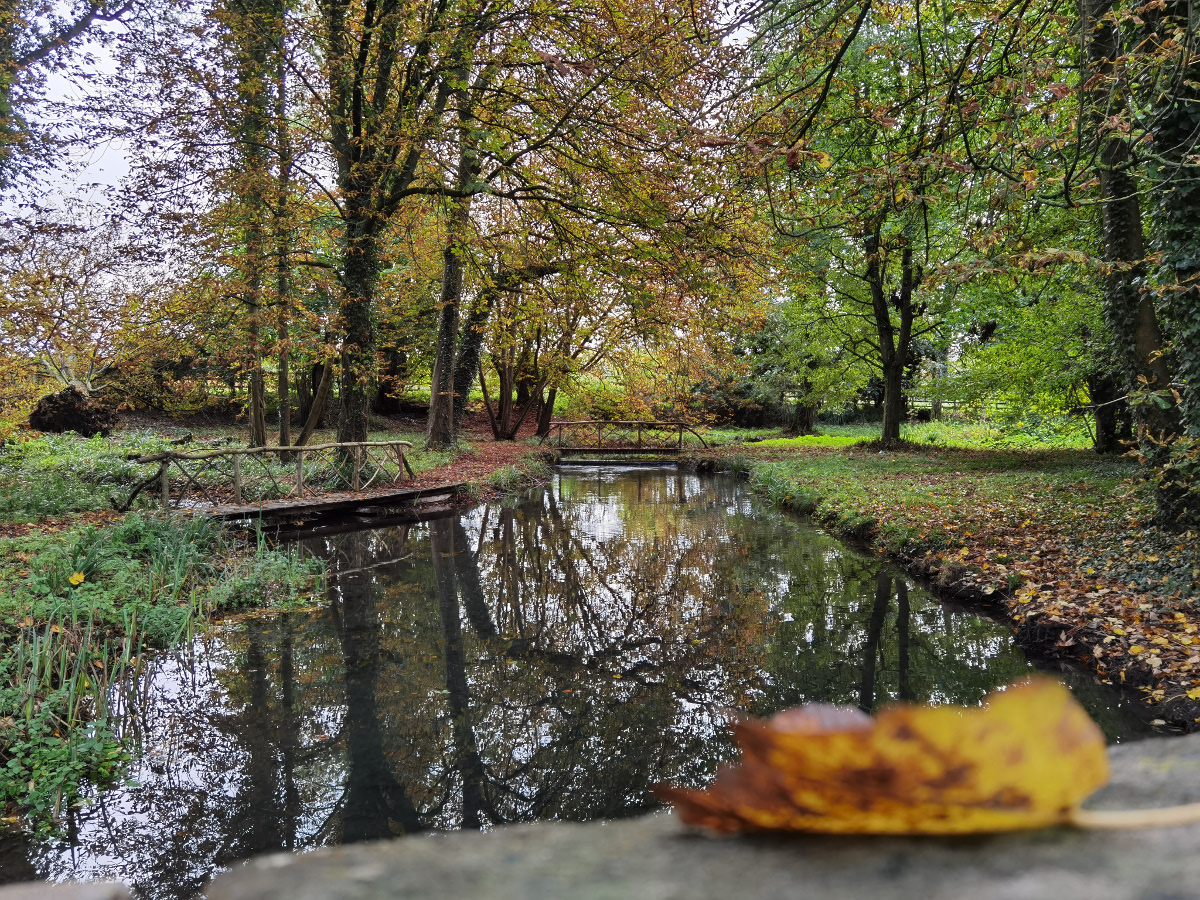Huawei P40 Pro revisited: Should you still buy it?

The Huawei P40 Pro will be remembered as a turning point in Huawei’s smartphone fortunes. After years of riding high and gaining ground on the market leaders, the US/China trade-dispute changed the fortunes of the P series on a dime.
In our review of the Huawei P40 Pro, we praised the handset for a range of improvements across the board. From tweaks to its already excellent camera system, to a new 90Hz display, and stellar ergonomic design. However, the top-tier hardware package couldn’t shake the absence of Google apps and API support. The App Gallery’s software selection was also far too small, making it impossible to recommend to most consumers. Especially at its £999/€999 (~$1,165) launch price.
I’ve revisited the Huawei P40 Pro numerous times over the past few months to drop in on the app situation and reference the still excellent camera setup. So, does the phone still hold up? Have the app criticisms been addressed? Should you still buy a Huawei P40 Pro in the second half of 2020?
See also: The best Huawei phones you can buy right now
The good stuff
Camera

The Huawei P40 Pro arrived as one of the best shooters when it launched. Its camera package remains near the top of the pack to this day.
One of the industry’s largest main image sensors, a 5x periscope zoom, a wide-angle lens with auto-focus, and a time-of-flight sensor for bokeh produce some of the best results in the business. Color, details, and portraits are excellent, and you’re well covered for every photography eventuality. The Huawei P40 Pro has arguably the most versatile package on the market, with highly consistent image quality across all its cameras.




The phone’s unique RYYB main sensor continues to perform incredibly well in low light too, without the long processing time associated with the software solutions offered by its rivals. However, Huawei’s low light processing doesn’t always produce the best colors. Google and even Samsung have slightly better algorithms when it comes to color reproduction and white balance in the dark.
The Huawei P40 Pro is still one of the best camera phones you can buy.
Yet, as great as the Huawei P40 Pro camera is, it isn’t the most consistent package on the market. Some images still come out with a slight red tint, which has been a minor problem with the RYYB camera for a while now. The phone also sometimes underexposes, but these issues certainly don’t ruin your pictures. Overall, however, Huawei’s camera package remains the P40 Pro’s biggest draw.
See also: Huawei P40 Pro vs the best phone cameras
Battery life

The Huawei P40 Pro’s 4,200mAh battery may not be the biggest in the business these days, but it continues to easily offer some of the longest battery life out there.
Combined with Huawei’s (sometimes overly) aggressive app and display optimizations, the P40 Pro will see you through a full day of use, and often well into a second day. That remains true even when using more demanding applications and taking lots of pictures. Although using 5G data can drain the battery a little faster.
Two-day battery life with fast and wireless charging. What more could you want?
The phone doesn’t just offer all-day battery life though. It’s chock-full of charging technologies to top you up should you run low on juice. 40W charging remains competitive for speed, even in the age of 120W charging technologies from the likes of Oppo and Xiaomi. 27W wireless charging support and fast reverse wireless charging are also a cut above the technologies offered by Google, Samsung, and Apple.
Related: The best wireless chargers: A buyer’s guide
Biometric security
Fingerprint biometrics are ubiquitous in the smartphone space. However, the Huawei P40 Pro’s optical sensor is one of the fastest and most accurate around. In my experience, at least. Combined with Huawei’s App Lock and Access Safe features, keeping your files and info secure has never been easier.
The inclusion of an infrared and time-of-flight sensor on the front enables fast and accurate face unlocking too. This method is more secure than many of the image-only face unlock options on the market. It’s every bit as, if not more convenient than, the fingerprint scanner and arguably more secure. I’m a big fan of this security combination, and Huawei executes it better than most.
The not so good stuff
Ergonomics

I’m going to disagree without our initial review here, which praised the P40 Pro for its ergonomic design. I just can’t get to grips with handling the handset after all these months. As nice as the design is to look at, the phone is too thick and heavy for my tastes.
The P40 Pro is 1.2mm thicker and 29g heavier than the P20 Pro, and 0.6mm and 17g than the P30 Pro. It’s much bulkier than the Galaxy S20 Plus too. The P series has been on an upward trend for thickness and weight, but the scales have tipped too far for me with the P40 Pro. The curved edges help to keep the phone reasonably easy to handle, but I’ve come to lament the bulk in my pocket.
Yes, it’s true that this added thickness helps to house the excellent camera and a big battery. It’s arguably a worthwhile trade-off for those features. But if you’re in the market for a slick and lightweight handset, the Huawei P40 Pro is not it.
Apps

Since the P40 series’ April release date, Huawei has worked to improve App Gallery and its HMS Core app development tools. The company has also introduced Petal Search and its Celia assistant to fill in the gaps left by Google. The manufacturer keenly throws around active user and app revenues figures to polish this glaring dent. But what really matters to users is access to their favorite apps. In that sense, Huawei’s ecosystem remains a mixed bag.
App Gallery has made strides to improve its curation efforts and it offers a better browsing experience than this point last year. Yet, finding many of the industry’s most popular apps remains an exercise in workarounds and all too often frustration. Settling for alternative apps and using Google apps via a web browser is now a way of life in Huawei’s ecosystem.
Read more: What is HMS? Everything you need to know about Huawei’s ecosystem
Petal Search, which helps to find apps from multiple sources with a single search, shows some signs of promise. It is quickly expanding into image, news, and more search avenues too. However, it feels like Huawei is somewhat reinventing the wheel here. Integration with the APKPure app manager helps increase the selection of compatible apps, but it still feels like a patchwork solution rather than a refined experience.
Ultimately, the fact remains that you still can’t find every app you might want. Sometimes those you can find don’t work properly because they rely on GMS either. Keeping apps from various sources up to date remains a bit of a security hazard too. It’s simply a headache most users would rather not have to deal with.
Stuck on Android 10
We’ve been running Huawei’s EMUI 11 beta on the P40 Pro, which will be making its way to global markets in due course. Overall, the latest iteration of Huawei’s OS is as good as its ever been. Optimized animations, swipe gesture navigation, improved always-on display features, and slimmed down setting menus are a pleasure to use. Although EMUI 10 users will already know what to expect from the bulk of the experience. Feature-wise, I think EMUI 11 is one of the best versions of Android around. But I know it might not be to everyone’s tastes.
Finding apps is better than before but it's still a hassle. The lack of Android 11 adds to the woes.
Unfortunately, EMUI 11 remains running on Android 10 rather than the more modern Android 11. Even though Huawei’s own features go above and beyond the basic Android package, EMUI 11 doesn’t feature everything that Android 11 has to offer.
Read more: Hands-on with Huawei EMUI 11: Still working through the Google divorce
We’re just not sure what this means for long term support with the Huawei P40 Pro, or other Huawei devices for that matter. When, if ever, will the device receive Android 11 or next year’s Android 12? What about security patches if a major issue is ever exposed, or even timely fixes for more minor issues?
The lack of the latest Android version is a disappointment for customers who want the latest features as well as the more security conscious. It’s not a reassuring sign for a handset that still commands a premium price tag.
Huawei P40 Pro review revisited: Should you still buy it?

The P40 Pro was a cutting edge piece of hardware back when it launched. The package still holds up very well over six months later. With an IP68 rating, fast wireless charging, a 90Hz display, and a best-in-class camera package, the handset’s hardware does everything you could possibly want. Despite its age and older-gen components, the Kirin 950 5G SoC continues to offer solid performance for the vast majority of tasks too. Although high-end gaming doesn’t quite keep up with the competition.
While you’re not quite getting the bleeding edge performance on offer from newer Snapdragon 865 Plus-powered phones or Huawei’s very own Mate 40 Pro, the rest of the hardware holds its own against newer rivals. It’s not just a phone for photography enthusiasts. Unfortunately, as boring as it is to keep repeating, the GMS and Google app situation remains a noticeable and frustrating blemish on an otherwise excellent smartphone. Nevertheless, the situation is marginally improved compared to when the phone first launched.
The P40 Pro's hardware remains excellent, but the app setup should still give prospective buyers pause for thought.
So, with all that said, should you buy a Huawei P40 Pro more than six months after launch? At the time of writing, you can pick up the handset for £772/€650, making it a much more attractive proposition than the original launch price. That’s close enough to the newer 5G Samsung Galaxy S20 FE and 256GB OnePlus 8 Pro to be well worth a look. Overall, the Huawei P40 Pro offers a lot of great hardware for the price, but the app situation will continue to be a deal-breaker for many. It’s also not necessarily a very futureproof purchase compared to brands that are increasingly promising three years of the latest Android updates.
Weighing up whether to buy the Huawei P40 Pro boils down to if you need or want Google’s app ecosystem. If you can live with mapping, email, and cloud storage alternatives, as well as workarounds to install popular games and social media platforms, then the P40 Pro is still worth a look. Especially if you’re after one of the best smartphone camera packages. It’s probably worth living without Google for a few weeks to see if you can put up with this adjustment beforehand. Otherwise, despite how great the phone is elsewhere, I’d recommend you steer clear.
- £772.00 at Amazon Save £127 .99
source: https://ift.tt/3jHcr0t
https://ift.tt/3jJiG3S
Comments
Post a Comment